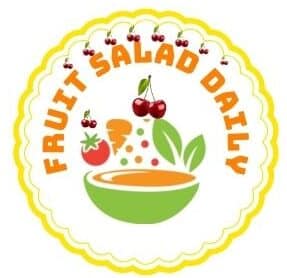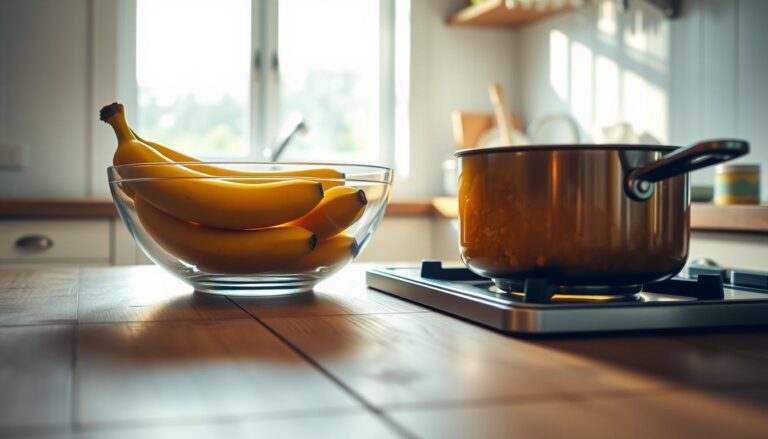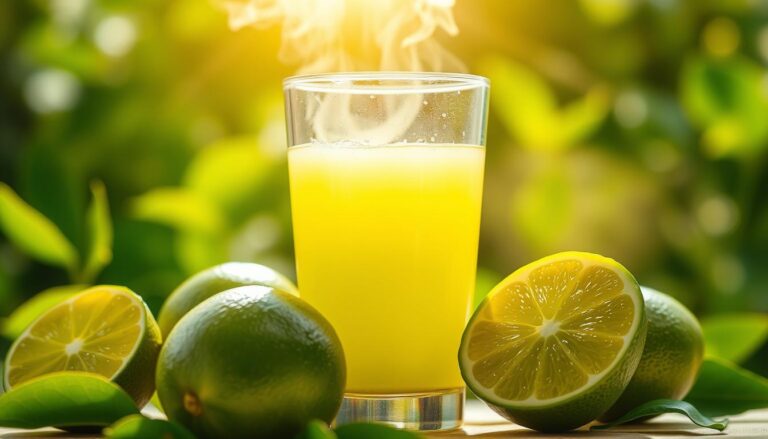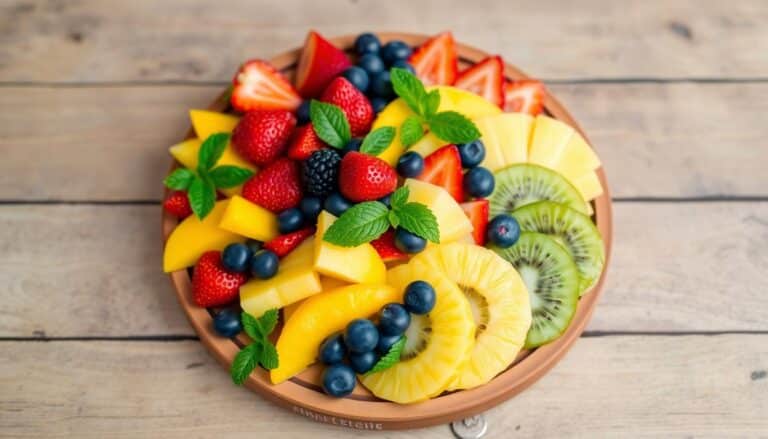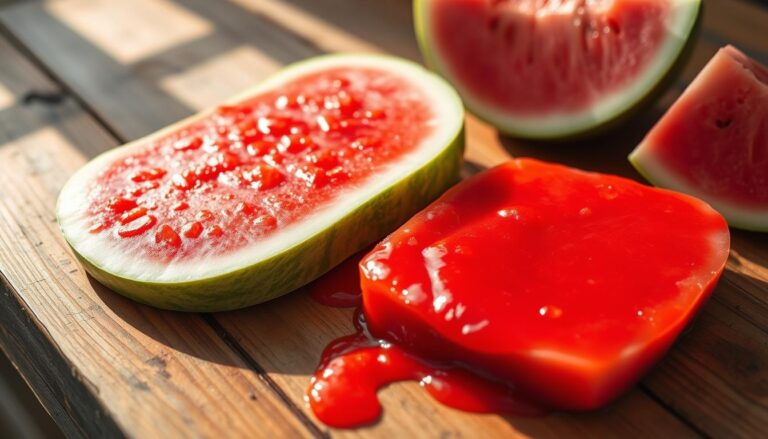Juice Cleanse: Why It’s The Best Detox For Beginners
Are you ready to hit the reset button on your health? A juice cleanse might be the perfect solution for those looking to kickstart their wellness journey. This liquid-only diet has been gaining popularity among health enthusiasts seeking a quick and intensive way to detox their body.
The juice cleanse is more than just a trendy diet. It’s a strategic approach to nutrition that involves consuming only fresh, nutrient-packed juices for a short period. Most people find that a juice cleanse can help them feel refreshed, energized, and ready to embrace healthier eating habits.
While the concept might seem intimidating, beginners can easily navigate this cleansing process with the right information and preparation. From boosting hydration to potentially improving overall well-being, a juice cleanse offers an intriguing path to personal health optimization.
Key Takeaways
- A juice cleanse typically lasts 1-3 days
- Helps reset nutritional habits and boost hydration
- Provides a concentrated intake of vitamins and minerals
- Can potentially improve energy levels and well-being
- Requires careful preparation and post-cleanse transition
Understanding the Basics of Juice Cleansing
A juice cleanse is a way to reset your body’s nutrition with liquid foods. You only drink fruit and vegetable juices for a few days, usually from one to seven. It’s important to know how it works and its effects on your health.
What Defines a Juice Cleanse
A juice cleanse is a short diet plan to remove toxins and get more nutrients. It has a few main points:
- Only drinking fresh, cold-pressed juices from fruits and veggies
- Not eating solid foods for a while
- Drinking juices that are raw and not processed
- Helping your body get rid of toxins
How Juice Cleanses Work in Your Body
When you do a juice cleanse, your body changes a lot. The juices give you nutrients fast, helping your body rest from digesting food.
| Body System | Juice Cleanse Impact |
|---|---|
| Digestive System | Less work, more rest |
| Metabolic Process | Faster nutrient use |
| Immune Function | May get a temporary boost |
Duration and Intensity Levels
The length of a juice cleanse depends on your goals and health. Most people suggest:
- 1-Day Cleanse: A gentle start
- 3-Day Cleanse: Deeper detox
- 5-Day Cleanse: A full nutritional reset
But, not everyone can do a juice cleanse. People with certain health issues, pregnant women, and those with metabolic problems should talk to a doctor first.
The Science Behind Juice Cleanse Benefits
Juice cleanses are popular for quick detox, but knowing the science is key. They offer a lot of nutrients but also have risks.
Juice cleanses give you a lot of vitamins and antioxidants. But, they also have important things to consider. Here are some points from research:
- Nutrient Concentration: Fresh juices pack high levels of vitamins and antioxidants
- Temporary Calorie Reduction: Most cleanses provide 900-1,000 calories daily
- Short-Term Metabolic Changes: Can impact your body’s natural processing systems
Nutrition experts say juice cleanses are missing something important. Removing fiber from fruits and vegetables eliminates crucial digestive support. The high sugar can also cause:
- Unexpected energy crashes
- Increased hunger
- Potential metabolic disruptions
Your body reacts differently to juice cleanses. Some feel refreshed, while others get tired and weak. A 1-3 day cleanse might help a bit, but experts say a balanced diet is better for health.
So, eating a variety of whole foods is the best way to stay healthy. This includes fruits, vegetables, and more.
Getting Started: Essential Equipment and Ingredients
Starting a juice cleanse needs careful planning and the right tools. You’ll need to know the essential equipment and ingredients for your wellness goals. The right juicer and fresh produce can make your juice cleanse enjoyable.
Recommended Juicers and Tools
Choosing the right juicer is key for a successful juice cleanse. You have two main types to consider:
- Centrifugal Juicers: Fast and affordable, great for beginners
- Masticating Juicers: Slower but better at getting nutrients
You’ll also need other tools to make your cleanse easier:
- High-quality storage containers
- Fine mesh strainers
- Cutting boards
- Sharp kitchen knives
Best Fruits and Vegetables for Cleansing
| Category | Recommended Ingredients | Benefits |
|---|---|---|
| Green Vegetables | Kale, Spinach, Cucumber | High in nutrients, supports detoxification |
| Root Vegetables | Carrots, Beets | Rich in antioxidants, supports liver health |
| Fruits | Green Apples, Pineapple, Oranges | Adds natural sweetness, provides vitamins |
Storage and Preparation Tips
Keeping your juices fresh is important. Store them in airtight glass containers and drink within 24-48 hours. Refrigerate them right away to keep nutrients and prevent bacteria.
Your juice cleanse is a personal journey to better health. Pick ingredients you like and enjoy the process with patience and mindfulness.
Creating Your Perfect Juice Cleanse Schedule
Creating a personalized juice cleanse schedule can change your detox experience. It can be a powerful tool for reset and rejuvenation. Knowing how to structure your day is key to getting the most from your cleanse.
Your ideal juice cleanse schedule should follow a strategic pattern. This supports your body’s natural detoxification processes. A three-day juice cleanse can lead to significant health improvements, like weight loss and better digestion.
Daily Juice Cleanse Timeline
- Upon Waking (6-7 AM): Start with lukewarm water and fresh lemon juice to kickstart metabolism
- 8-9 AM: Green vegetable juice packed with nutrients
- 10:30-11:30 AM: Nutrient-dense juice or smoothie
- 1-2 PM: Vegetable-based juice blend
- 3-4 PM: Beet, carrot, and apple juice for energy
- 5-6 PM: Light juice or cleanse-friendly smoothie
- 6-8 PM: Nut milk (almond or cashew) for evening nutrition
When doing a juice cleanse, choose gentle activities like yoga or meditation. The goal is to support your body’s detox without stress. Each juice should give you about a quarter of your daily fruit and veggie needs.
Pro tip: Before starting your juice cleanse, eat a light, plant-based diet. Also, reduce alcohol and sugar intake. This helps your body adjust better to the cleanse.
Customization is Key
Your juice cleanse schedule can be adjusted. Listen to your body and make changes as needed. Some might need more juices, while others might need fewer. The main thing is to keep your nutrition and hydration consistent during the cleanse.
Best Juice Cleanse Recipes for Beginners
Starting a juice cleanse is exciting and can change your life. Juice cleanse recipes are a great way to detox naturally and feel better. They offer delicious, healthy drinks to start your wellness journey.
Choose juice cleanse recipes with the best nutrients. The right mix supports detox and keeps you full of energy all day.
Morning Energy Boost Combinations
Begin your day with juices that wake you up and keep you going. Here are some great morning juices:
- Green Powerhouse: Spinach, green apple, cucumber, and ginger
- Citrus Sunrise: Pineapple, orange, and mint
- Beetroot Energizer: Beetroot, carrot, and coconut water
Midday Detox Blends
Midday juices keep your energy up and help with detox. Try these refreshing ones:
- Cleansing Cucumber: Cucumber, celery, green apple, and turmeric
- Metabolism Booster: Kale, pineapple, and ginger
- Hydration Blend: Watermelon, mint, and coconut water
Evening Relaxation Juices
End your day with juices that ease digestion and help you relax:
- Calm Digestive Blend: Carrot, beetroot, and fresh ginger
- Anti-Inflammatory Elixir: Pineapple, turmeric, and mint
- Nighttime Detox: Cucumber, celery, and basil
For the best results, mix up your juice cleanse recipes. Try new combinations to find what’s best for you.
Common Mistakes to Avoid During Your Cleanse

Starting a juice cleanse can be a big change. But, many people make mistakes that can hurt their detox journey. Knowing these common errors can help you do your cleanse better and safer.
- Ignoring Food Safety Protocols
- Overlooking Hydration Needs
- Consuming Excessive Fruit Juices
- Neglecting Nutritional Balance
One big mistake is drinking unpasteurized juices. Drinking untreated juice can pose significant health risks. This is true for people with health issues, older adults, and young kids. Make sure your juices are made with clean tools and fresh stuff.
It’s also key to store juices right. You should drink fresh juices within 15 minutes. If you use slow or twin-gear juicers, store in a sealed container for 24-36 hours. Press juicers let you store for up to 72 hours.
| Mistake | Potential Consequence | Prevention Strategy |
|---|---|---|
| Overloading on Sweet Fruits | Insulin Spikes | Limit to 1 sweet fruit per serving |
| Inadequate Hydration | Dehydration | Drink 2 liters of filtered water daily |
| Skipping Nutrient Variety | Nutrient Imbalance | Rotate greens weekly |
Doing a juice cleanse right needs planning and attention. By avoiding these common errors, you’ll get the most out of your cleanse. This helps your body detox naturally.
Managing Detox Symptoms and Side Effects
Starting a juice cleanse can cause physical and emotional changes. Your body is adjusting to a new way of getting nutrients. Knowing these symptoms helps you go through your cleanse safely and with confidence.
Physical Reactions to Expect
When you do a juice cleanse, your body might go through some changes. These are usually part of the detox process. You might feel:
- Mild headaches
- Increased fatigue
- Digestive system adjustments
- Changes in energy levels
- Potential mood fluctuations
Emotional Changes During Cleansing
The journey of a juice cleanse isn’t just about your body. Your mood can change too. This happens because you’re eating fewer calories and your body is getting different nutrients. Mindfulness and patience are key during this time.
| Symptom | Potential Duration | Recommended Action |
|---|---|---|
| Irritability | 1-3 days | Rest, hydration, gentle activities |
| Energy Fluctuations | 2-4 days | Light exercise, adequate sleep |
| Hunger Pangs | Initial 48 hours | Drink water, herbal tea |
When to Stop or Modify Your Cleanse
Your health and comfort are the most important things during a juice cleanse. If you feel:
- Severe dizziness or fainting
- Prolonged extreme fatigue
- Persistent nausea
- Intense muscle weakness
Always talk to a doctor before starting a juice cleanse. This is even more important if you have health issues.
Pre and Post Cleanse Nutrition Guidelines
Getting ready for and after a juice cleanse needs careful planning. Your body needs gentle support to get the most from your cleanse.
Before starting, it’s key to prepare. Slowly stop eating foods like:
- Processed foods
- Caffeine
- Alcohol
- Refined sugars
After the cleanse, adding solid foods should be done slowly. Cold-pressed juices have made your body ready for gentle foods. Here’s how to ease back into solid foods:
- Start with clear vegetable broths
- Try soft fruits like bananas and berries
- Add small amounts of lean proteins
- Make sure to chew your food well
Drinking lots of water is still important after your cleanse. Try to drink 8-10 glasses a day. Coconut water is great for extra hydration, giving your body the energy it needs.
Your diet after the cleanse should be full of nutrient-rich foods. Don’t go back to the usual American diet too soon. Keep up the good work of eating clean that you started during your cleanse.
Maximizing Weight Loss with Juice Cleanse

Starting a juice cleanse is an exciting step toward managing your weight. But, it’s important to know what to expect for real results.
Weight loss on a juice cleanse isn’t simple. Studies reveal that most weight loss is from:
- Water weight reduction
- Less calorie intake
- A temporary change in metabolism
Here are realistic weight loss goals for a juice cleanse:
- 3-day cleanse: Lose about 3-5 pounds
- 5-day cleanse: Aim for 3-7 pounds
The Standard American Diet (SAD) makes it hard to lose weight. Switching to juice cleanse options is a step toward better health.
Here are tips to boost weight loss on your juice cleanse:
- Drink coconut water to stay hydrated
- Do some light exercise
- Slowly add whole foods back after the cleanse
- Eat more plant-based foods before and after
Keep in mind, a juice cleanse isn’t a long-term fix for weight loss. It’s a body reset that can help you start eating healthier and get a metabolic boost.
Supporting Your Body’s Natural Detox Process
Your body has amazing ways to get rid of bad stuff. Learning how to help these natural detox processes can make you feel better and healthier during a juice cleanse.
The main detox organs like the liver, kidneys, lungs, lymphatic system, colon, and skin are key. They help get rid of toxins. Juice cleanse recipes can give your body the nutrients it needs to keep these organs working well.
Liver Support Combinations
Your liver is a hard worker, filtering out toxins. It needs certain nutrients to do its job best. Here are some juice cleanse recipes that help support your liver:
- Beet and Garlic Detox Juice
- Green Leafy Vegetable Blend
- Citrus and Ginger Cleansing Drink
These juices have sulfur compounds and antioxidants. They help your liver work better and get rid of heavy metals.
Kidney-Friendly Juice Blends
Keeping your kidneys healthy is important during detox. Here are some juice cleanse recipes that are good for your kidneys:
- Watermelon and Cucumber Hydration Juice
- Cranberry and Apple Kidney Support Blend
- Parsley and Lemon Cleansing Drink
Even though juice cleanses can be good, experts warn against only drinking juice for too long. The National Center for Complementary and Integrative Health says there’s not much research on how well detoxes work.
| Detox Organ | Supporting Nutrients | Key Benefits |
|---|---|---|
| Liver | Sulfur compounds, antioxidants | Toxin removal, heavy metal elimination |
| Kidneys | Hydration, vitamin C | Waste filtration, mineral balance |
Pro tip: Always add whole food snacks like raw almonds to your juice cleanse. They help keep your blood sugar stable and add important fiber.
Safety Considerations and Contraindications
Before starting a juice cleanse, it’s important to know the risks. Not everyone should try a juice cleanse. Some people need to be careful about their health and food choices.
Your body might face challenges during a juice cleanse. The U.S. Food and Drug Administration (FDA) talks about contamination risks. This is because untreated juices can have harmful bacteria.
Who Should Avoid Juice Cleanse
- People with diabetes
- Individuals with kidney disease
- Those with gastrointestinal disorders
- Pregnant or breastfeeding women
- People with compromised immune systems
Potential Health Risks
| Risk Category | Potential Consequences |
|---|---|
| Nutritional Deficiency | Lack of essential proteins and healthy fats |
| Blood Sugar | Potential fluctuations, specially with high-fruit juices |
| Metabolic Impact | Potential metabolism slowdown |
Medical experts say it’s key to talk to a healthcare provider before starting a juice cleanse. The risks can outweigh the benefits for many people.
Important Precautions
- Start with short juice cleanse duration
- Monitor your body’s response carefully
- Stay hydrated with water
- Stop the cleanse if you experience severe symptoms
- Gradually reintroduce solid foods
Even though juice cleanses might look good, they’re not a lasting fix for health or weight. Eating well and exercising regularly are better ways to stay healthy.
Conclusion
Your juice cleanse journey is about exploring nutrition and wellness. The trend promises quick results, but research shows important things to consider. A juice cleanse usually lasts 3 to 7 days, and knowing its effects on your health is key.
Studies show that juice cleanses can change your body’s microbiome. They might upset your gut bacteria, leading to more inflammation and less good bacteria. So, it’s wise to start a juice cleanse with care and advice from experts.
Weight loss from a juice cleanse is often short-lived. It mainly comes from losing water and eating fewer calories. Nutritionists say it’s better to eat balanced meals. Your health long-term depends on eating whole foods, lean proteins, and a varied diet that helps your body detox naturally.
Pay attention to your body and choose lasting health plans. A juice cleanse might help in the short term, but it’s not a quick fix. Talk to health experts, eat well, and remember that lasting wellness comes from eating nutritious foods that fit your needs.
FAQ
What exactly is a juice cleanse?
How long should a typical juice cleanse last?
What equipment do I need to start a juice cleanse?
Can I lose weight with a juice cleanse?
Are there any side effects of a juice cleanse?
Who should not do a juice cleanse?
What types of juices are best for a cleanse?
How often can I do a juice cleanse?
Can I exercise during a juice cleanse?
How do I transition back to solid foods after a cleanse?
Source Links
- Should You Try a Juice Cleanse? – https://www.verywellfit.com/juice-cleanse-89120
- Should You Try a Juice Cleanse for Weight Loss? – https://health.clevelandclinic.org/can-juice-cleanses-help-you-lose-weight
- What is the juice cleanse? – https://www.bbcgoodfood.com/health/special-diets/what-juice-diet
- Juice Cleanse for Beginners – Jugo USA – https://www.jugousa.com/blog-and-events/how-to-juice-cleanse-for-beginners/
- Everything You Need to Know About Starting a Juice Cleanse – https://www.baltimoremagazine.com/section/health/juice-cleanse-benefits-tips-tricks/
- You Don’t Need To Try a Juice Cleanse—Here’s Why – https://www.health.com/nutrition/cleanse-dangers
- Do Juice Cleanses Detox the Body? – https://www.urmc.rochester.edu/news/publications/health-matters/do-juice-cleanses-detox-the-body
- What You Can Expect from a Three-Day Juice Cleanse – https://www.shape.com/lifestyle/mind-and-body/your-body-juice-cleanse
- How to do a juice cleanse? – https://www.juicepress.com/blogs/news/how-to-juice-cleanse?srsltid=AfmBOopsyUb1xlKd2vTrMZHfxt8GPrw6O4pXWv6LN8JdEMTbBNiFtKj9
- 3 Day Detox Juice Cleanse: Refresh Your Body With These Easy Recipes – https://drniveditapandey.com/liver/3-day-detox-juice-cleanse/
- How to Prep For a Juice Cleanse and Maximize Your Results – https://www.rawgeneration.com/blogs/ill-start-monday/how-to-prep-for-a-juice-cleanse-3-tips-to-maximize-your-results?srsltid=AfmBOoq8EUph0kSGWUwMWcQpqAHhG39eqvG0sm2GKQVxfqYC3fOhbU9s
- 7-Day Juice Plan to Add More Fruits and Vegetables to Your Diet – https://www.eatingwell.com/article/278357/how-to-start-juicing-7-day-juice-plan-to-add-more-fruits-and-vegetables-to-your-diet/
- How to do a juice cleanse? – https://www.juicepress.com/blogs/news/how-to-juice-cleanse?srsltid=AfmBOood3potz1YyHdZNXNqkcnXItf6xzU0aNpEU9uTuoynCFnvuNrR_
- Top 7 Tasty Juicing Recipes for Healthy Weight Loss | Season – https://www.seasonhealth.com/blog/juicing-recipes-weight-loss
- 10 Awesome Detox Juice Recipes + Insider Tips – https://www.hurom.com/blogs/reviews/detox-juice-recipes
- Are You Making These Common Juicing Mistakes? + Recipe – https://foodbabe.com/juicing-mistakes/
- How To Do A Juice Cleanse — Good Judy’s Market & Juice Bar – https://www.drinkgoodjudys.com/juice-cleanse-guide?srsltid=AfmBOoquyg1fjgtrJhyTbBx4uGCW339uImII8wwjNdIkplCRxQNe-Jg9
- Detox Diets: Do They Work? Are They Healthy? – https://www.webmd.com/diet/detox-diets
- What Are The Symptoms Of Detoxing While Juicing? – https://simplicityjuice.com/blogs/latest/what-are-the-symptoms-of-detoxing-while-juicing?srsltid=AfmBOorxiRQsyWY8HcBIqbMe7tUpDwUf6ZGkG6BreG6uw5ysiecXsgxm
- Navigating Nutrition: What To Eat After a Juice Cleanse – https://www.mypromeals.com/blog/article/navigating-nutrition-what-to-eat-after-a-juice-cleanse?srsltid=AfmBOooQHmHoUC0inulz6qKQIUxDdVGsvypF9TG7Th-vXFPpvQvo0yGP
- How to Prep For a Juice Cleanse and Maximize Your Results – https://www.rawgeneration.com/blogs/ill-start-monday/how-to-prep-for-a-juice-cleanse-3-tips-to-maximize-your-results?srsltid=AfmBOopSE-SWBTUwoAPCZ7mkF9w7aGqvjFTEzfQ7pSVeX968Y2UNUhuY
- How to Prep For a Juice Cleanse and Maximize Your Results – https://www.rawgeneration.com/blogs/ill-start-monday/how-to-prep-for-a-juice-cleanse-3-tips-to-maximize-your-results?srsltid=AfmBOoom4p1s1Bkz1WMMXqfZXBs2bSU-P41efhBegev72HY-g5ta86GQ
- How Much Weight Can You Lose On A 3-Day Juice Cleanse – https://simplicityjuice.com/blogs/latest/how-much-weight-can-you-lose-on-a-3-day-juice-cleanse?srsltid=AfmBOopWILtZRVpRra-oB5ED6WVXrJWNG0rCL_zyauyuOasz2_tEmbU3
- Should you do a cleanse? – https://www.uclahealth.org/news/article/should-you-do-cleanse
- What are the benefits of a juice cleanse? – https://www.juicepress.com/blogs/news/juice-cleanse-benefits?srsltid=AfmBOoraZIB44W0W2PipJp2heBkdPyx5xOKL7qOA3lrU-5u6wfuNjanu
- 7 Ways to Help Your Body Detoxify Itself Naturally – https://www.realsimple.com/how-to-detox-your-body-naturally-8422021
- 5-Day Juice Cleanse Explained: Recipes, Results, and Safety Concerns – https://betterme.world/articles/5-day-juice-cleanse/
- The Science Behind Detox Juices and Their Benefits – https://drgooddeed.com/nutrition-diet/science-behind-detox-juices-and-their-benefits/
- Juice cleanse: As little as 3 days of fasting may change microbiome – https://www.medicalnewstoday.com/articles/juice-cleanses-may-disrupt-microbiome-only-3-days-inflammation-bacteria
- Scientists Find Popular Diet Harms Gut, Boosts Inflammation – https://www.prevention.com/food-nutrition/a63740323/juice-cleanse-harm-gut-health-inflammation/
